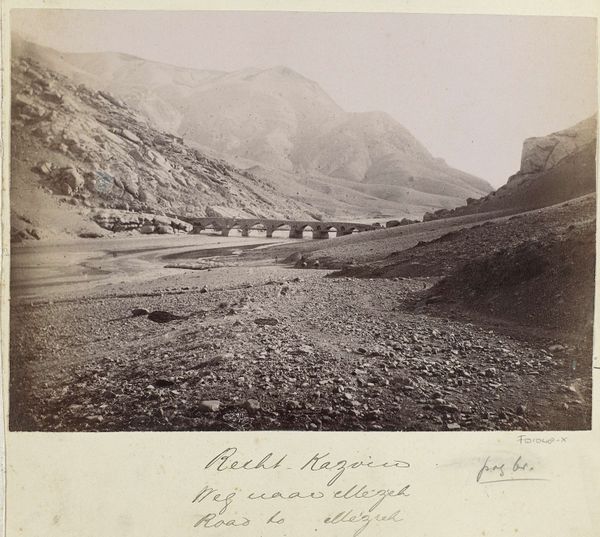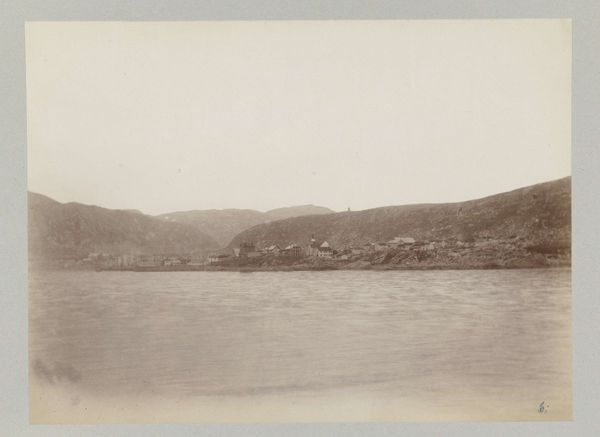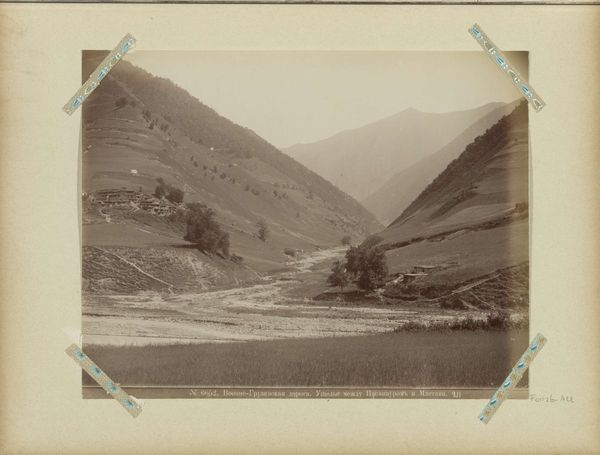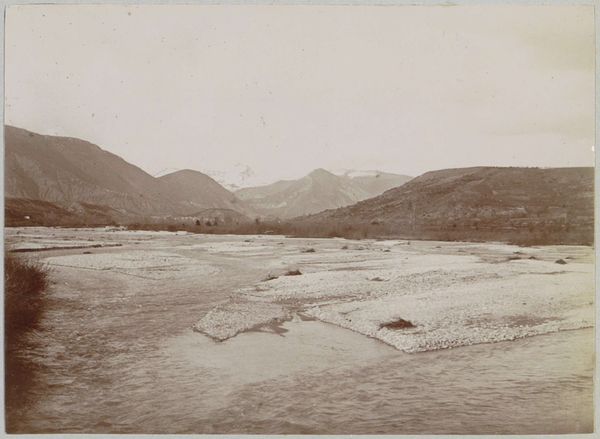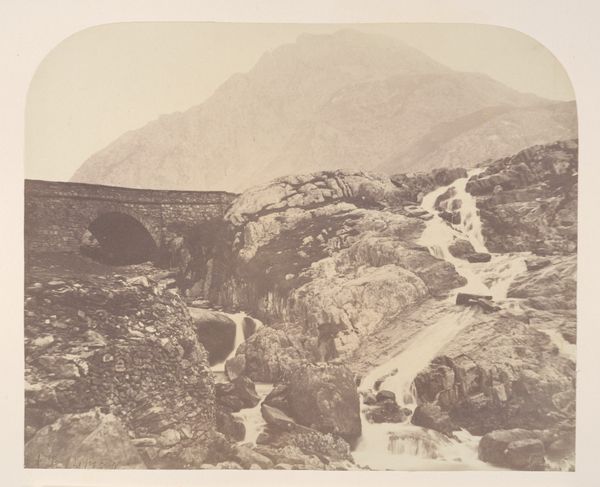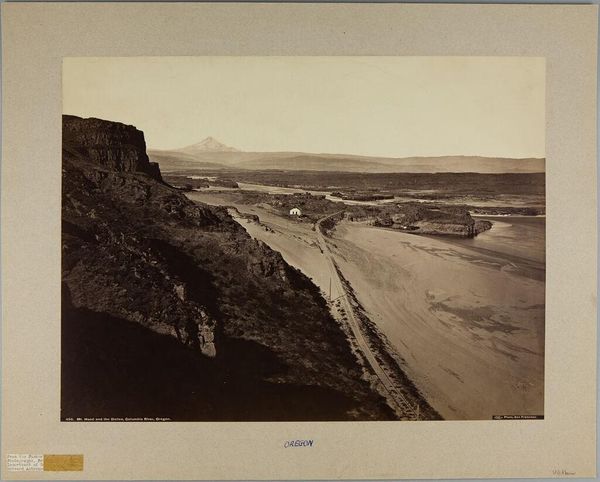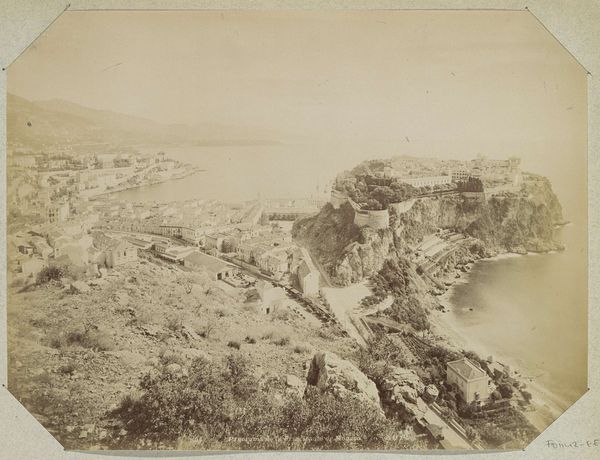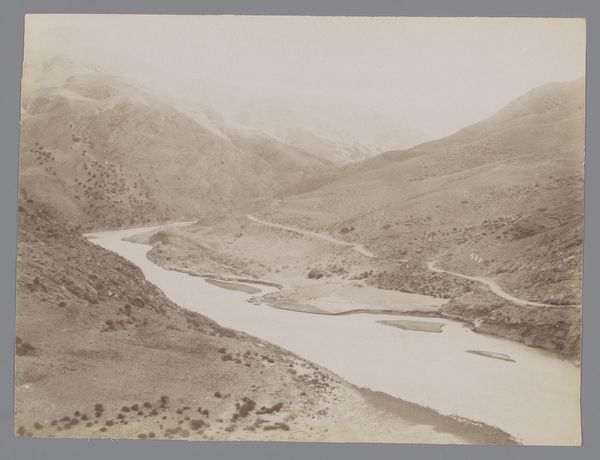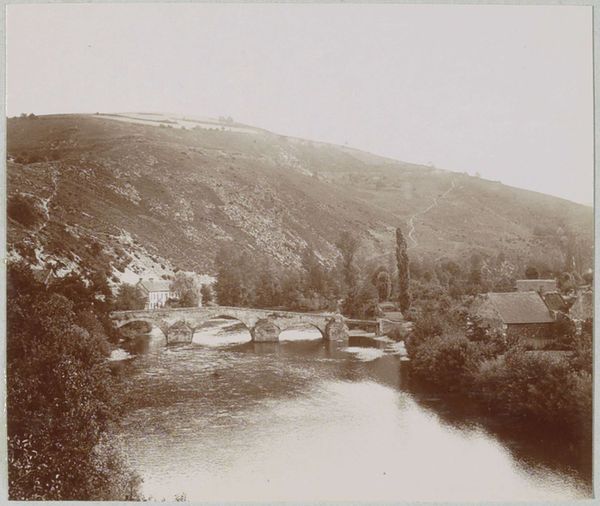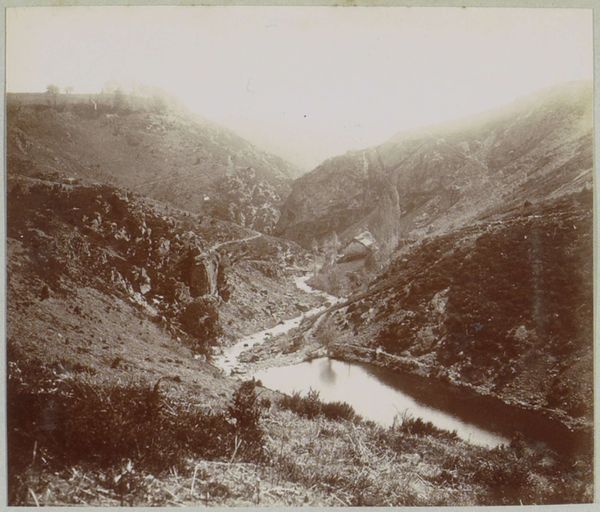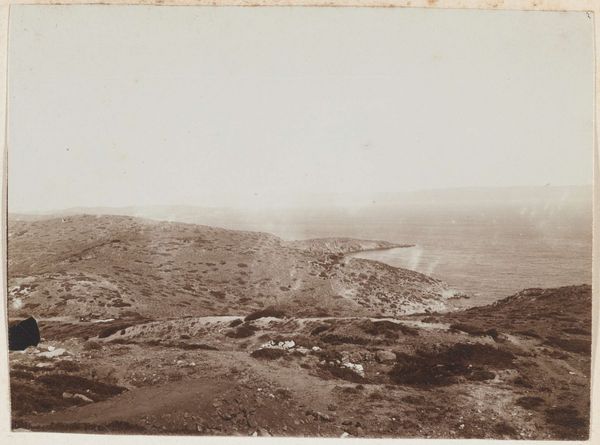
photography, gelatin-silver-print
#
landscape
#
river
#
photography
#
orientalism
#
gelatin-silver-print
Dimensions: height 171 mm, width 228 mm
Copyright: Rijks Museum: Open Domain
Editor: So, this is Antoine Sevruguin’s gelatin silver print, "Dorp Pachinar aan een rivier in Perzië", circa 1880 to 1895. The muted tones give it an almost dreamlike quality. What strikes you about this photograph? Curator: The choice of gelatin silver is interesting. It was becoming commercially dominant at this time, democratizing photography, making it cheaper, quicker. Consider how Sevruguin documented Persian life; he wasn't just capturing images. He was producing a commodity, a visual product for consumption, mainly by Europeans seeking an exoticized Orient. Editor: So, the medium itself points to a specific intention and audience? Curator: Exactly. Look at the composition; the careful arrangement of the river, the village. It evokes a sense of authenticity but consider who is framing this narrative and for what market. What labour was involved? Editor: I see what you mean. It's not just about aesthetics; it’s about the economy of image-making. So the photograph operates almost like a…souvenir? Curator: Precisely. This wasn't simply an objective record. Sevruguin ran a commercial studio. The prints were sold, traded, circulated within networks fueled by colonial interests. These "landscapes" fed a specific appetite for the East. Think of the darkroom as a small factory, producing visions on demand. Editor: Wow, I hadn't thought of it that way before. It’s not just a beautiful scene; it's part of a much bigger social and economic picture. Curator: And the act of viewing then becomes equally complex, charged with historical and political weight. Understanding the materiality helps unlock that complexity. Editor: Right, it shifts the focus from "what" is depicted to "how" and "why" it was depicted that way, and for whom. Thanks, I’ll definitely keep that in mind!
Comments
No comments
Be the first to comment and join the conversation on the ultimate creative platform.
